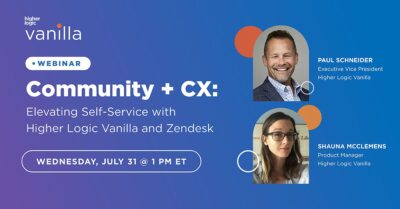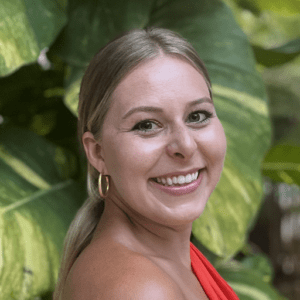
Growing Customer Relationships with Community
We recently partnered with Airmeet and Apollo to discuss how you effectively “Drive Efficient Growth and Retention with Community Events.” If you missed it, we have your recap.
Recently, we’ve been thinking a lot about how B2B tech companies, like ours, can better engage their customers. Back in the day, companies could succeed on their product alone or by executing on a creative marketing campaign.
But the playing field has changed.
Customers want more than just quality service…they want connections – connections to the brand, connections to their team and connections to the market. That is what is driving their purchasing decisions. While most companies understand this, many find it difficult to deliver, whether it’s resources constraints or inability to scale interactions.
One forward-thinking way to address this is through community.
This was the topic of discussion for our recent webinar with our CMO, Erika Brookes, Mark Kilens from Airmeet and Dan Cmejla from Apollo.
You can view the recording here, but we wanted to share a few of our favorite learnings in case you don’t have time to watch the whole thing.
“We need to give our CSMs more of a voice.”
Customer Success Managers (CSMs) are closest to the customers, yet they aren’t always involved in roadmap discussions or consulted on campaigns ideas. As companies look to design successful campaigns and products, they should elevate that voice and lean on their CSMs more for ideas and the voice of the customers.
“Marketing is too important to leave just to the marketing team.”
Relationship building is a team sport. Marketing shouldn’t be the only one engaging prospects and customers, but rather all teams should work to build relationships with customers. Similarly, no one team should own the customer journey. Departments need to work together to support customers throughout their lifecycle.
“If you want to have a community impact, the first thing is to find where you should have an impact.”
Start by understanding your buyers’ behaviors (e.g., where they go for information, what events they are attending, etc.). Dan recommended getting this information from recent closed one deals. This will help you identify areas of influence – these are the spaces in which you want to build your brand.
“Always be stacking.”
What does this even mean? Relationship building used to be very linear. You completed an action; you got the desired result. However, things are more complicated these days and to create brand love and engagement, you must stack a whole series of interactions and do so every single day. It is this consistency and dedication that creates lasting relationships.
“Stop speaking like a corporate robot.”
A lot of company pages on LinkedIn lack personality and pizzazz. The solution? Speak like yourself! Seems obvious, but that way others can actually connect with you. For example, Dan shared that “at Apollo, we’ve made sure to showcase the humans for everything. Oh, we’re launching a new conversational intelligence tool, let’s talk about the product leader behind it. Let’s have that product leader tell the story themselves, that way people build an emotional connection, not only to the tool, but the people behind the tool.”
“Use your various spaces and communities to power each other.”
This was a big takeaway from Dan and why Apollo’s been so successful. He reviewed a circular diagram where events, community groups, social media, and advocates were all connected and created content for each other. For example, he said, “use your events to create content for social and then that social content promotes your events. You use your evangelists to attend those events and then they will promote it and then they show up on your social too.” It becomes a virtuous cycle, where you create content in a single place but then it snowballs and fuels other channels.

So, then what does effective engagement look like?
It looks like leaning on your CSMs to know your customers better and then working across teams to meet customers where they are.
It looks like connecting in a more human way and continuously looking for opportunities to form a stronger connection.
It looks like building a community to enable all of these things.



